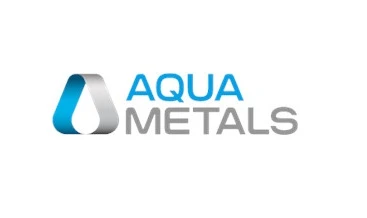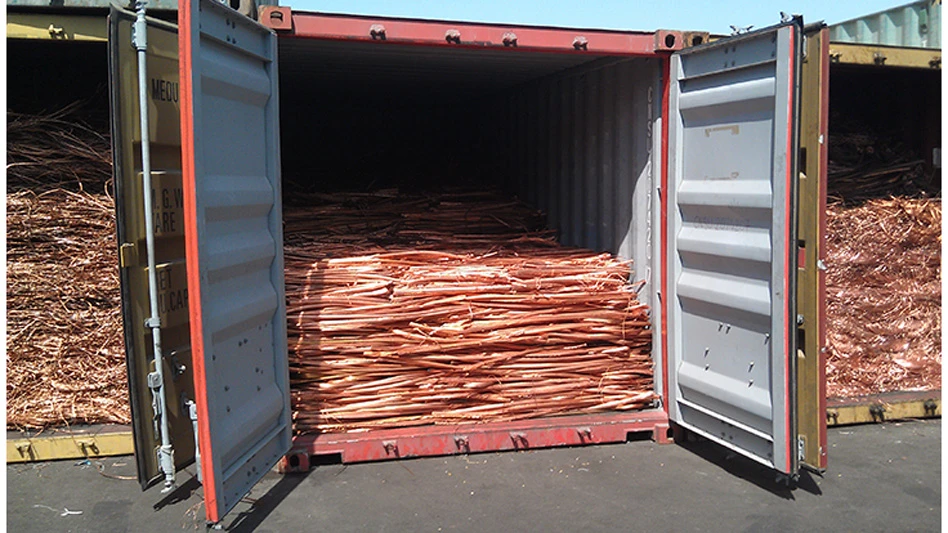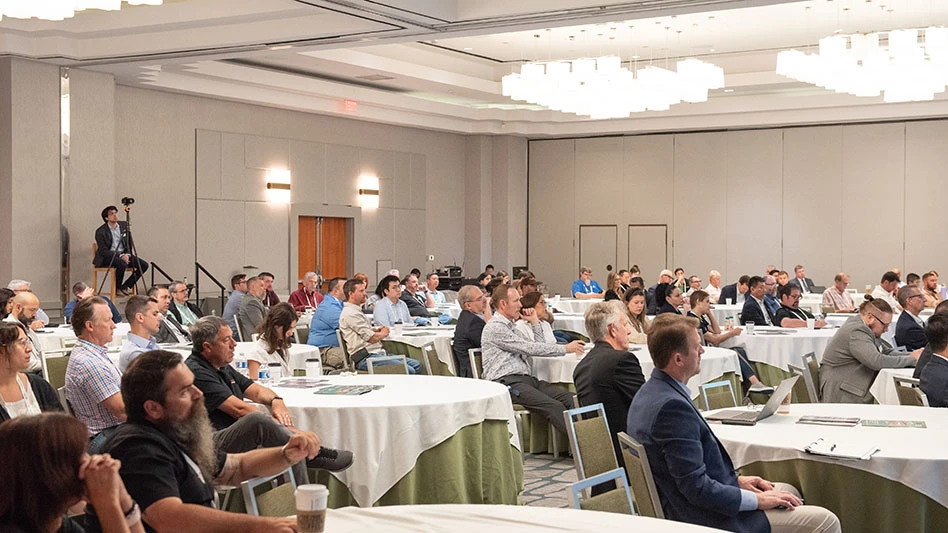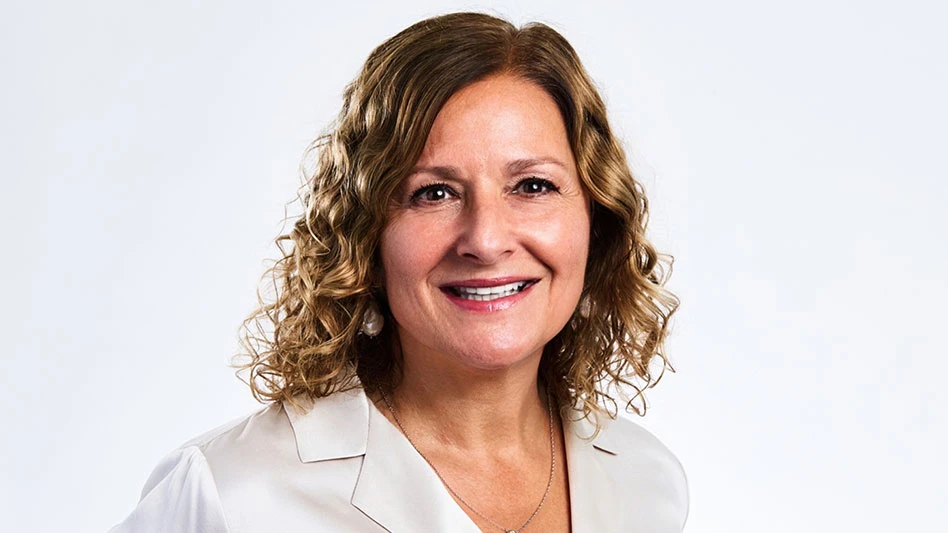At the mention of the term "material recovery facility," one normally envisions a plant that processes a complete range of post-consumer curbside recyclables – glass, tin, aluminum and plastic containers and paper. But there are a other MRFs that process other commodities such as construction and demolition debris, complex durables and other specialized recyclables.
There are also MRFs that are designed to handle only a specific type of material, such as paperstock. These MRFs have been designed and built for several reasons. One, paperstock normally constitutes 70 percent to 75 percent of the volume by weight of curbside material. Two, a separate facility helps keep the fiber clean from contamination. Three, a paper-only facility can usually store and process more secondary paper because the MRF is focused on only one type of commodity. And finally, the secondary paper processing industry is simply a more established industry.
Another main reason is that in a small market, or in a larger market where a MRF is processing recyclables from a portion of the larger area, operators have found that it makes sense to concentrate on fiber first. Then, as the market grows, it becomes possible to expand operations to include processing other recyclables.
These so-called paper MRFs usually work in tandem with other conventional MRFs to meet the needs of a regional recycling program.
FIBER FIRST
In the Dallas/Fort Worth area, Laidlaw Waste Systems operates two MRFs that work together to process materials from that region. In Dallas, the company operates the Dallas Recycling Center which handles commingled recyclables but only processes fiber, and the Fort Worth MRF that handles and processes a wide range of curbside recyclables.
The Dallas MRF, which has been in operation for less than a year, was designed specifically to meet the needs of the particular region. "We handle the blue bags from about 56,000 homes, and about 90 percent of that weight is from fiber," says Roy Dooley, market recycling manager for Laidlaw’s Dallas and Ft. Worth facilities. "So, it made sense to concentrate on that percentage. The other 10 percent of recyclables is compacted and transhipped to our Fort Worth facility for processing."
When the blue bags arrive at the Dallas MRF they are torn open and the paper is removed. Plastic bottles and tin and aluminum cans are compacted and shipped to Fort Worth. Glass is not collected in the Laidlaw blue bag program in Dallas, although it is collected at other recycling centers and under other programs in the Dallas area. "It would not work very well if we had glass commingled in the bags because we would have a high rate of contamination from broken glass," says Dooley.
The 75,000-square-foot Dallas facility is set up with a fiber processing line designed for maximum throughput. Three special disk screens from Bulk Handling Systems, Eugene, Ore., work to separate cardboard from paper, and to sort paper from other fiber such as brown bags.
One screen with 10-inch disks is set up to sort old corrugated cardboard at 9 tons per hour. The line also uses two manual sorters. "You need the human sorters because the mechanical screening process has about a 95 percent efficiency rate," says Dooley. "From time to time it will bounce over a piece of wood or a heavy bag, and you need to get those out for a 100-percent pure mix."
The two other screens use smaller 3-inch disks that are designed to remove dirt, glass, lids and other contaminants from the paper stream. One runs at about 10 tons per hour with four manual sorters and receives the leftover feed from the 10-inch screening system; the other operates at 6.5 tons per hour with six sorters. This last one pulls out the blue bags from the commingled program so it is more labor intensive, and thus has a lower throughput.
Overall, Dooley is pleased with the performance of the facility.
"The Dallas MRF has gone beyond my expectations," says Dooley. "Processing capacity right now is at 85 percent of an 40-hour work week, and we would like to see that capacity increase to 24 hours a day, 7 days a week."
At the 24,000-square-foot Fort Worth MRF, commingled material arrives from about 125,000 homes, and from blue bags shipped daily from the Dallas MRF. In Fort Worth, all the recyclables are commingled and collected in blue bins, except for newspaper which is separated in its own blue bin or bundled at curbside. Altogether the Fort Worth MRF receives about 800 tons per month of commingled recyclables and 1,400 tons per month of paper from the Fort Worth area, and about 125 tons per month, or two truckloads a day, of commingled recyclables (minus the fiber, of course) from the Dallas MRF.
The Fort Worth MRF is a full-service facility that processes and sorts everything it takes in, including glass. The only time material is shipped to the Dallas MRF is if the paper sorting and baling equipment is inoperable at the Fort Worth facility.
In addition, Dooley claims that the Fort Worth facility is the only MRF he is aware of that does plastic grinding on site. "I installed a grinder back in 1992 to grind clear and green PET and natural HDPE bottles," he says. "It made a lot of sense because back then there was a good 5 to 7 cents a pound premium for flake over baled plastic. Now, that premium has about disappeared."
The Fort Worth MRF still does on-site grinding because Dooley says he can "consistently provide a quality product." But he may eventually remove the grinding operation altogether. "If I were to look at the situation today, I would not install a grinder," he adds. "In fact, I may eventually pull the current one out because the maintenance is becoming too costly."
WHY TWO MRFS?
Know the market, then grow with the market, are words to live by in business, and Laidlaw is heeding those words in Texas. "Our situation in the Dallas/Fort Worth area is not happenstance," says Dooley. "We designed both MRFs to address the needs of each market. So, the markets themselves have dictated two different types of processing facilities. The Dallas MRF is designed to give us the most bang for the buck. Sure, we could put in a sorting line for the other recyclables, but it would not be cost effective for only 125 tons a month of non-fiber recyclables."
According to Dooley, if the non-fiber recyclable tonnage increases at the Dallas MRF, he may consider expanding processing operations there. "If we get another contract in the area and our non-fiber tonnage goes up dramatically, then it would make sense to expand the Dallas MRF. But until then these two MRFs are working very well in tandem. We probably would not have designed this Dallas MRF the way we did without the Fort Worth facility nearby."
There are other MRFs across the country that also work in pairs, and most of them involve a paper MRF and a regular MRF.
In Finksburg, Md., about 30 miles northwest of Baltimore, Phoenix Systems Inc. (owned by Waste Management Inc., Oak Brook, Ill.) operates a 100-ton-per-day paper MRF that was built in 1990. The 35,000-square-foot facility has a contract with Carroll County and receives fiber from about 20 different carriers that service both residential and commercial accounts.
Non-fiber commingled recyclables are sent to a WMI MRF in York, Pa., just over the Maryland border. Because of the proximity of the York MRF, WMI built the Phoenix MRF because studies showed that it would be more efficient to target the high percentage of post-consumer fiber in the in the area, according to Ron Dye, plant supervisor at Phoenix.
The Phoenix MRF, however, does not have advanced sorting equipment like the Laidlaw MRF in Dallas. "We just do a basic sort here," says Dye. "But we are looking to upgrade with either an automated or manual sorting system to increase efficiency."
Another tandem MRF situation exists in the state of Washington, and once again it involves a paper-only facility and a conventional MRF. Both MRFs are operated by WMI. According to Bill Stansberry, operations manager for Waste Management Northwest/Recycle America, Woodinville, Wash., the paper MRF services about 75,000 residential customers in Snohomish County and another 10,000 in King County near Seattle. "We can operate as a separate paper MRF because the residents in our program separate the fiber at the curb," he says. "Commingled containers such as tin, aluminum, plastic and glass go in one bin, newspaper in another bin and mixed paper in another. Any large pieces of OCC are bundled."
Therefore, the paper is collected separately and delivered to Woodinville. "Since it is separated from the other recyclables in the beginning, it makes sense to keep it that way through the collection process and follow-on sorting to keep contamination low," adds Stansberry.
The Woodinville MRF processes about 120 tons per day of fiber from residential source-separated collection only. From this, the facility recovers about 35 tons per day of OCC and 5 tons per day of high grade newspaper. The remaining low-grade mix is sent overseas or to other domestic facilities. "Basically, anywhere we can get rid of it," says Stansberry.
In addition to the 120 tons per day from the curbside programs, another 50 tons per day of fiber comes from commercial accounts. In all, the facility processes about 160 tons of fiber daily. And as an added feature, the Woodinville MRF handles and processes yard waste, adds Stansberry.
Another reason that there are two separate MRFs is because of space requirements. "Our paper MRF is on 10 acres here, and we need every bit of it," says Stansberry.
Operating two separate facilities to process curbside materials may be viewed as less cost effective than one large facility, but there are reasons why it works in some areas.
"It keeps you focused on one type of material," says Dan Rigazio, general manager of Recycle America, a WMI MRF in Des Moines, Iowa. "Fiber constitutes so much of the waste stream that it makes sense in many cases to dedicate a facility solely to processing the commodity."
VOLUME NEEDED
When developing a MRF for a particular market, having enough initial volume to sustain operation is critical. And MRF operators who are dealing with low secondary paper prices point to volume and operating efficiencies as two keys to surviving the downturn in the market.
"You can’t control market prices, and right now the market is bad," says Laidlaw’s Dooley. "But you can control your operating costs and, in a way, your volume. The more volume you can run, the better off your operation will be, because it helps as far as fixed costs are concerned."
Dooley claims his mechanical sorting system has increased efficiency by as much as 900 percent. "Before, when we were sorting paper at our Fort Worth MRF, it would take two human sorters one hour to sort about 1 to 1.25 tons of OCC mix. Now we can do 9 tons an hour with our screening system."
The screens have also allowed the Laidlaw MRFs to bring in much dirtier loads for sorting, and Dooley is so impressed with the screen that he has had one installed at a third Laidlaw facility – a transfer station in Fort Worth.
The author is managing editor of Recycling Today.

Explore the July 1996 Issue
Check out more from this issue and find your next story to read.
Latest from Recycling Today
- USTR announces phased measures designed to address China’s shipbuilding dominance
- APR, RecyClass release partnership progress report
- Clearpoint Recycling, Enviroo sign PET supply contract
- Invista expanding ISCC Plus certification program
- Redwood partnership targets recycling of medium-format batteries
- Enfinite forms Hazardous & Specialty Waste Management Council
- Combined DRS, EPR legislation introduced in Rhode Island
- Eureka Recycling starts up newly upgraded MRF





